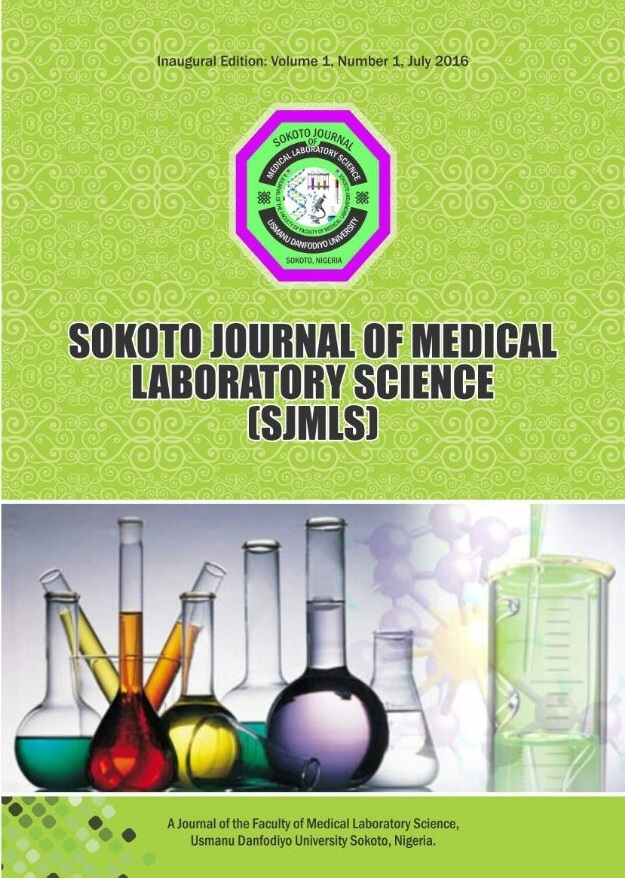Haematological and Body Weight Changes in Wistar Rats Following Exposure to Cement Dust
DOI:
https://doi.org/10.4314/sokjmls.v9i2.17Keywords:
Cement dust; haematological parameters; blood cells; anaemiaAbstract
Cement dust is an atmospheric pollutant which poses a significant threat to the environment and humans (Akinola et al., 2018). This study investigated the haematological and body weight changes in Wistar rats following exposure to cement dust. Twenty-four (24) Wistar rats weighing between 250 g and 280 g were divided into 4 groups of 6 rats per group. Group A rats were placed in a cement dust free chamber while Group B - D rats were exposed to various concentrations of cement dust dispersed from 5 g, 10 g and 20 g of cement, respectively. The weights of the animals in each group were taken and recorded weekly and the difference between them and previous weights were noted. At the end of 30th day of exposure, the animals were weighed and euthanized under chloroform anaesthesia. Blood samples were collected through cardiac puncture into EDTA anticoagulated tube for haematological analysis. Findings of the study for body weight showed that cement dust caused significant decrease in body weights of the exposed rats across all the groups. Cement dust also decreased some haematological parameters such as lymphocytes and basophils, haemoglobin and haematocrit, red blood cells and other red cell indices with associated reticulocytosis. These deranged haematological parameters may lead to anaemia and increased susceptibility to infections. The decreased haematological parameters are consistent with usual haematological findings in anaemia. It was concluded that exposure to cement dust caused body weight loss and haematological derangements in rats which are capable of compromising haematological function and could ultimately lead to mortality.




